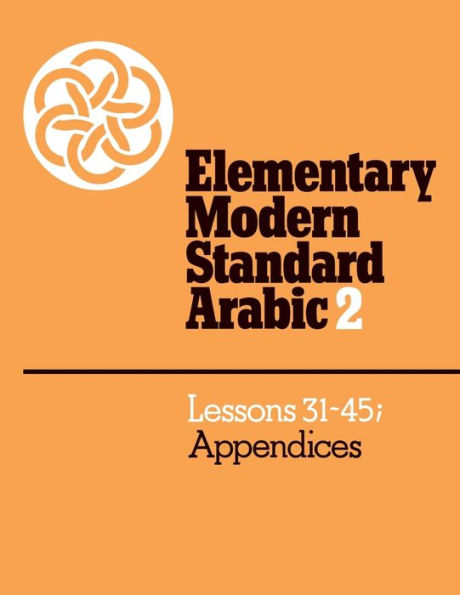Home
Tajweed Rules - احكام التجويد [English]: Part 1,2 & 3
Barnes and Noble
Loading Inventory...
Tajweed Rules - احكام التجويد [English]: Part 1,2 & 3 in Bloomington, MN
Current price: $34.99

![Tajweed Rules - احكام التجويد [English]: Part 1,2 & 3](https://prodimage.images-bn.com/pimages/9789366089225_p0_v1_s600x595.jpg)
Tajweed Rules - احكام التجويد [English]: Part 1,2 & 3 in Bloomington, MN
Current price: $34.99
Loading Inventory...
Size: OS
This book serves as a comprehensive guide to
learning Tajweed
, the art of reciting the Qur'ān correctly, with clear pronunciation and proper articulation. It is designed to make the learning process
simple
and
accessible
, catering to learners of various levels-from beginners to advanced.
The book explains all of the essential
Tajweed rules
of
Hafs 'an 'Aasim by the way of Ash-Shatibiyyah
, providing guidelines that, when applied, have proven beneficial to learners. The explanations are written in
simple language
, and visual aids such as
pictures, charts, tables, and mind maps
have been included to accommodate different types of learners. These visual aids help reinforce the rules, making it easier to remember them when reciting.
The book covers everything from the
articulation points
of the Arabic letters and their
characteristics
to advanced topics like the rules for vowelless letters (such as
Nūn Sākinah
,
Mīm Sākinah
, and
Lām Sākinah
) and
lengthening
.
With its thorough yet
concise approach
, this book is suitable for
self-study
or classroom use, making it a practical tool for improving Qur'ān recitation. It is especially valuable for those looking to
perfect the pronunciation
in a way that mirrors the original recitation by Prophet Muhammad صلى الله عليه وسلم. The combination of all three volumes into one makes it a
complete
user-friendly
resource that supports learners at every stage of their journey with the Qur'ān.
Table of Contents
- The Qur'ān
- Brief notes on the Ten Qira'āt (Various ways of recitations)
- What is Tajweed?
- Mistakes in Tajweed
- Seeking refuge and Saying the Basmalah (Saying bismi-llāhi r-raḥmāni r-raḥeem)
- Articulation points of letters (Makhārij Al-ḥuroof)
- Characteristics of letters (Ṣifat Al-ḥuroof)
- Heaviness and lightness (Tafkheem and Tarqeeq)
- Rules of geminated Nūn and Mīm (Rules of Nūn and Mīm Mushaddadah)
- Rules of vowelless Nūn and Nunnation (Rules of Nūn Sākinah and Tanween)
- Rules of vowelless Mīm (Rules of Mīm sākinah)
- Rules of vowelless Lām (Rules of Lām sākinah)
- The types of lengthening (Al-Mudood)
- The relationships between two meeting letters
- The connecting Hamzah (Hamzat Al-waṣl)
- The stop and the start (Al-waqf and Al-Ibtidā')
- The Accent (An-Nabr)
- The meeting of two vowelless letters (The meeting of two sākin letters)
- Pronoun Hā
- Stopping at the end of words
- The seven Alifs
- Feminization Tā' (Tā' Atta'neeth)
- Avoid mistakes in the recitation (All Arabic Alphabet letters)
learning Tajweed
, the art of reciting the Qur'ān correctly, with clear pronunciation and proper articulation. It is designed to make the learning process
simple
and
accessible
, catering to learners of various levels-from beginners to advanced.
The book explains all of the essential
Tajweed rules
of
Hafs 'an 'Aasim by the way of Ash-Shatibiyyah
, providing guidelines that, when applied, have proven beneficial to learners. The explanations are written in
simple language
, and visual aids such as
pictures, charts, tables, and mind maps
have been included to accommodate different types of learners. These visual aids help reinforce the rules, making it easier to remember them when reciting.
The book covers everything from the
articulation points
of the Arabic letters and their
characteristics
to advanced topics like the rules for vowelless letters (such as
Nūn Sākinah
,
Mīm Sākinah
, and
Lām Sākinah
) and
lengthening
.
With its thorough yet
concise approach
, this book is suitable for
self-study
or classroom use, making it a practical tool for improving Qur'ān recitation. It is especially valuable for those looking to
perfect the pronunciation
in a way that mirrors the original recitation by Prophet Muhammad صلى الله عليه وسلم. The combination of all three volumes into one makes it a
complete
user-friendly
resource that supports learners at every stage of their journey with the Qur'ān.
Table of Contents
- The Qur'ān
- Brief notes on the Ten Qira'āt (Various ways of recitations)
- What is Tajweed?
- Mistakes in Tajweed
- Seeking refuge and Saying the Basmalah (Saying bismi-llāhi r-raḥmāni r-raḥeem)
- Articulation points of letters (Makhārij Al-ḥuroof)
- Characteristics of letters (Ṣifat Al-ḥuroof)
- Heaviness and lightness (Tafkheem and Tarqeeq)
- Rules of geminated Nūn and Mīm (Rules of Nūn and Mīm Mushaddadah)
- Rules of vowelless Nūn and Nunnation (Rules of Nūn Sākinah and Tanween)
- Rules of vowelless Mīm (Rules of Mīm sākinah)
- Rules of vowelless Lām (Rules of Lām sākinah)
- The types of lengthening (Al-Mudood)
- The relationships between two meeting letters
- The connecting Hamzah (Hamzat Al-waṣl)
- The stop and the start (Al-waqf and Al-Ibtidā')
- The Accent (An-Nabr)
- The meeting of two vowelless letters (The meeting of two sākin letters)
- Pronoun Hā
- Stopping at the end of words
- The seven Alifs
- Feminization Tā' (Tā' Atta'neeth)
- Avoid mistakes in the recitation (All Arabic Alphabet letters)
This book serves as a comprehensive guide to
learning Tajweed
, the art of reciting the Qur'ān correctly, with clear pronunciation and proper articulation. It is designed to make the learning process
simple
and
accessible
, catering to learners of various levels-from beginners to advanced.
The book explains all of the essential
Tajweed rules
of
Hafs 'an 'Aasim by the way of Ash-Shatibiyyah
, providing guidelines that, when applied, have proven beneficial to learners. The explanations are written in
simple language
, and visual aids such as
pictures, charts, tables, and mind maps
have been included to accommodate different types of learners. These visual aids help reinforce the rules, making it easier to remember them when reciting.
The book covers everything from the
articulation points
of the Arabic letters and their
characteristics
to advanced topics like the rules for vowelless letters (such as
Nūn Sākinah
,
Mīm Sākinah
, and
Lām Sākinah
) and
lengthening
.
With its thorough yet
concise approach
, this book is suitable for
self-study
or classroom use, making it a practical tool for improving Qur'ān recitation. It is especially valuable for those looking to
perfect the pronunciation
in a way that mirrors the original recitation by Prophet Muhammad صلى الله عليه وسلم. The combination of all three volumes into one makes it a
complete
user-friendly
resource that supports learners at every stage of their journey with the Qur'ān.
Table of Contents
- The Qur'ān
- Brief notes on the Ten Qira'āt (Various ways of recitations)
- What is Tajweed?
- Mistakes in Tajweed
- Seeking refuge and Saying the Basmalah (Saying bismi-llāhi r-raḥmāni r-raḥeem)
- Articulation points of letters (Makhārij Al-ḥuroof)
- Characteristics of letters (Ṣifat Al-ḥuroof)
- Heaviness and lightness (Tafkheem and Tarqeeq)
- Rules of geminated Nūn and Mīm (Rules of Nūn and Mīm Mushaddadah)
- Rules of vowelless Nūn and Nunnation (Rules of Nūn Sākinah and Tanween)
- Rules of vowelless Mīm (Rules of Mīm sākinah)
- Rules of vowelless Lām (Rules of Lām sākinah)
- The types of lengthening (Al-Mudood)
- The relationships between two meeting letters
- The connecting Hamzah (Hamzat Al-waṣl)
- The stop and the start (Al-waqf and Al-Ibtidā')
- The Accent (An-Nabr)
- The meeting of two vowelless letters (The meeting of two sākin letters)
- Pronoun Hā
- Stopping at the end of words
- The seven Alifs
- Feminization Tā' (Tā' Atta'neeth)
- Avoid mistakes in the recitation (All Arabic Alphabet letters)
learning Tajweed
, the art of reciting the Qur'ān correctly, with clear pronunciation and proper articulation. It is designed to make the learning process
simple
and
accessible
, catering to learners of various levels-from beginners to advanced.
The book explains all of the essential
Tajweed rules
of
Hafs 'an 'Aasim by the way of Ash-Shatibiyyah
, providing guidelines that, when applied, have proven beneficial to learners. The explanations are written in
simple language
, and visual aids such as
pictures, charts, tables, and mind maps
have been included to accommodate different types of learners. These visual aids help reinforce the rules, making it easier to remember them when reciting.
The book covers everything from the
articulation points
of the Arabic letters and their
characteristics
to advanced topics like the rules for vowelless letters (such as
Nūn Sākinah
,
Mīm Sākinah
, and
Lām Sākinah
) and
lengthening
.
With its thorough yet
concise approach
, this book is suitable for
self-study
or classroom use, making it a practical tool for improving Qur'ān recitation. It is especially valuable for those looking to
perfect the pronunciation
in a way that mirrors the original recitation by Prophet Muhammad صلى الله عليه وسلم. The combination of all three volumes into one makes it a
complete
user-friendly
resource that supports learners at every stage of their journey with the Qur'ān.
Table of Contents
- The Qur'ān
- Brief notes on the Ten Qira'āt (Various ways of recitations)
- What is Tajweed?
- Mistakes in Tajweed
- Seeking refuge and Saying the Basmalah (Saying bismi-llāhi r-raḥmāni r-raḥeem)
- Articulation points of letters (Makhārij Al-ḥuroof)
- Characteristics of letters (Ṣifat Al-ḥuroof)
- Heaviness and lightness (Tafkheem and Tarqeeq)
- Rules of geminated Nūn and Mīm (Rules of Nūn and Mīm Mushaddadah)
- Rules of vowelless Nūn and Nunnation (Rules of Nūn Sākinah and Tanween)
- Rules of vowelless Mīm (Rules of Mīm sākinah)
- Rules of vowelless Lām (Rules of Lām sākinah)
- The types of lengthening (Al-Mudood)
- The relationships between two meeting letters
- The connecting Hamzah (Hamzat Al-waṣl)
- The stop and the start (Al-waqf and Al-Ibtidā')
- The Accent (An-Nabr)
- The meeting of two vowelless letters (The meeting of two sākin letters)
- Pronoun Hā
- Stopping at the end of words
- The seven Alifs
- Feminization Tā' (Tā' Atta'neeth)
- Avoid mistakes in the recitation (All Arabic Alphabet letters)

















